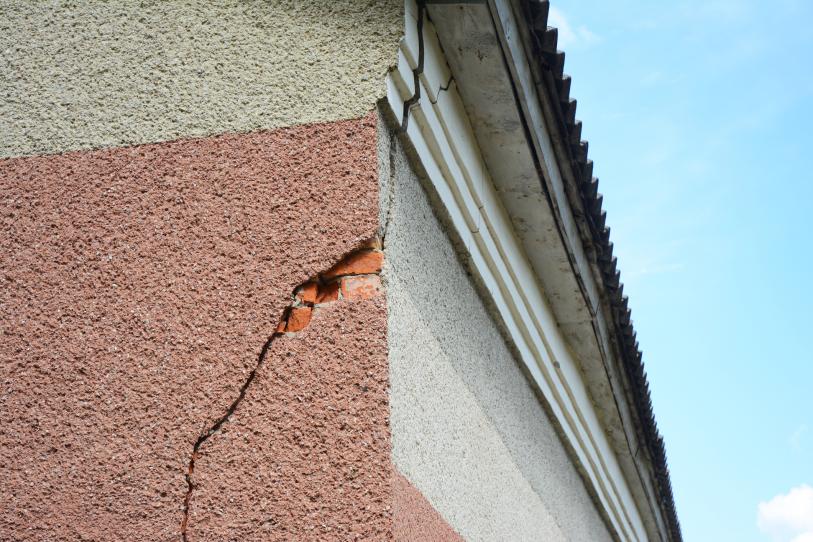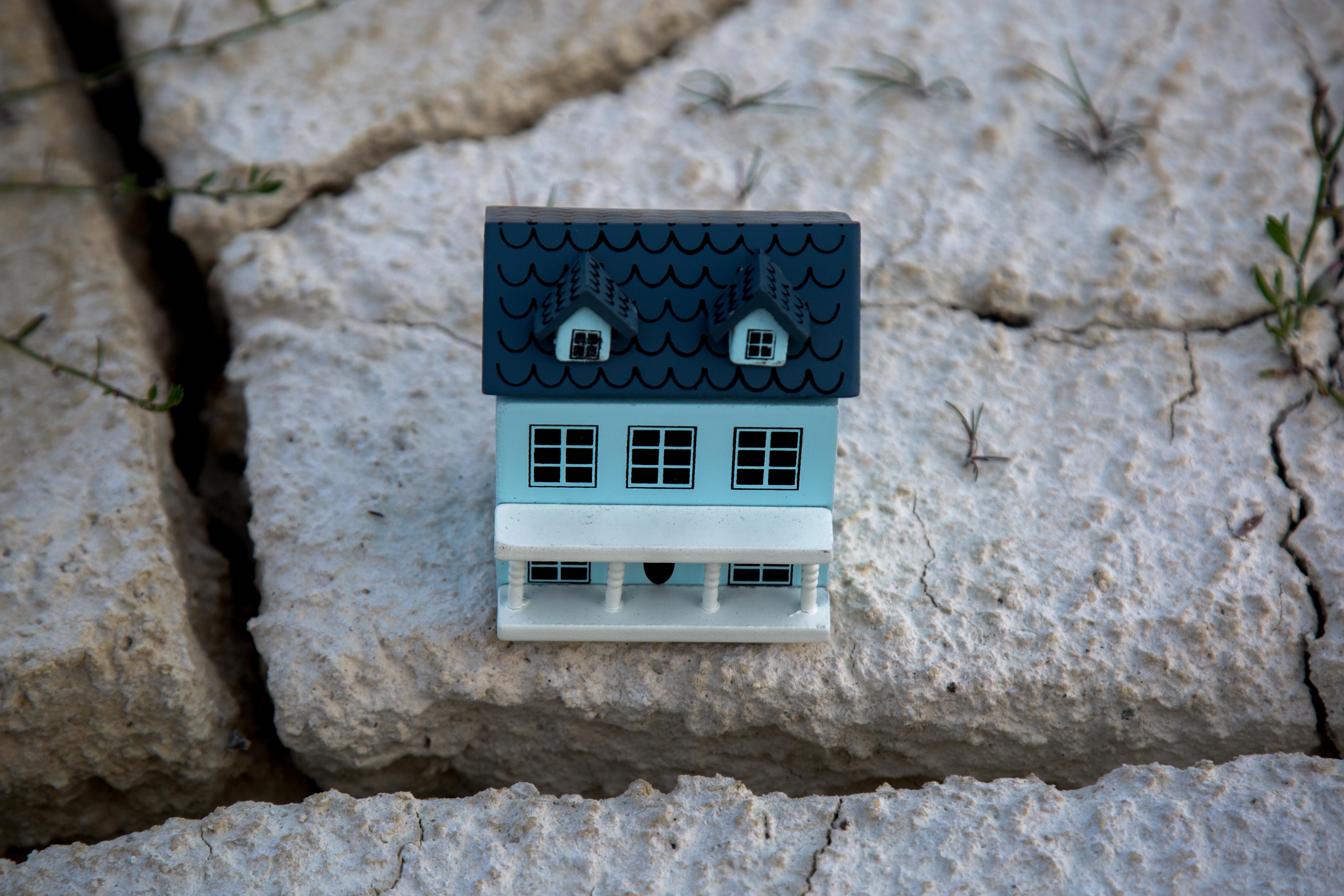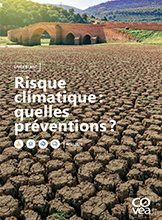Drought : How to prevent the shrinkage and swelling of clay soils
- Prevention
- Covéa
03 October 2024
Climate change increases the risk of extreme events such as floods, hail, storms and droughts. By 2050, the number of claims due to drought is expected to increase by 60%. What are the impacts and what can we do? Benjamin Poudret, Director of Climate and Major Perils, gave us some answers.
What are the losses and impacts of drought, particularly on housing ?

Benjamin Poudret : Geotechnical drought, or the shrinking and swelling of clay soils, is a natural phenomenon caused by variations in the water content of clay soils. Clay soils contract and expand in response to rainfall cycles. These movements can cause significant damage to buildings. This phenomenon is also influenced by the mineralogical composition of the clays and the immediate environment, including the presence of vegetation and water management practices.
Individual houses built on shallow foundations are particularly vulnerable due to the volumetric changes in the ground caused by climatic cycles. The proximity of vegetation exacerbates this phenomenon as roots absorb soil water, increasing suction and water content fluctuations.
Poor management of rainwater and waste water around the house also aggravates the problem, as it can cause the soil to become plastic. The mechanical properties of the soil are then altered, which can lead to significant damage such as sinking foundations, cracks in walls and floors, and problems with structural stability.

In France, shrinkage and swelling of clay soils have become more frequent and more intense since 2015, with the exception of 2021. The year 2022 was marked by a major drought, the sixth in ten years, with an estimated cost of more than €3.5 billion according to the Caisse Centrale de Réassurance (CCR). Since the inclusion of drought in the natural catastrophe regime in 1989, France has experienced six of the nine costliest years since 2015. This alarming trend highlights the growing importance of this phenomenon and the need for preventive measures and adjustments to construction and land management practices.
Insurers are directly affected by the increasing frequency and severity of shrinkage and swelling of clay soils related losses, putting their financial equilibrium to the test. This situation is forcing us to revise actuarial models to better anticipate risks. The initial underestimation of this phenomenon is increasing the pressure on the sector, requiring adjustments in risk management and greater collaboration with authorities and geotechnical experts to develop effective adaptation strategies.
3.5 billion €
is the estimated cost of the drought according to the Caisse Centrale de Réassurance (CCR).
What is Covéa doing to prevent risks related to climate change and drought ?
Benjamin Poudret : Faced with an increasing phenomenon for insurers and homeowners, it is crucial to act both in terms of prevention and repair. The implementation of adaptation measures must take into account costs, technical feasibility and the acceptance of the various stakeholders.
Covéa uses predictive modelling to assess the potential impact of climate change on clay soils. This allows us to anticipate droughts and their consequences by developing climate change scenarios. In addition, the creation of detailed risk maps facilitates the identification of vulnerable regions.
La sécheresse est devenue le premier poste de sinistralité du régime catastrophe naturel pour les particuliers, devant les inondations. D'ici 2050, on prévoit une augmentation de 70% de sa fréquence. Les dégâts occasionnés par la sécheresse peuvent faire l'objet d'une indemnisation par l'assureur sous deux conditions : la commune où se situe l'habitation fissurée doit bénéficier par décret d'une reconnaissance favorable de l'état de catastrophe naturelle au titre de la sécheresse avec parution au Journal officiel. L'expert missionné par l'assureur vient constater les dégâts imputables au phénomène de RGA.
En tant qu'assureur, notre rôle est d'accompagner nos assurés face à ce phénomène. Pour mieux les accompagner et ainsi mieux les sensibiliser, nous mettons en place plusieurs dispositifs. Des dispositifs simples, en leur partageant des bonnes pratiques à respecter, comme de ne pas placer un arbre trop proche de leur maison car il peut pomper de l'eau au sol, ou vérifier régulièrement les fuites de canalisation qui pourraient modifier la teneur en eau du sol. Mais aussi des dispositifs plus complexes, en passant par des tests pour protéger les maisons déjà construites, comme le projet Maison Conforté par Humidification mené avec le Cerema, qui par un process d'éco-humidification permet de ralentir les fissures que peut générer un épisode de sécheresse.
This integrated approach provides Covéa with effective tools for assessing risks, planning preventive measures and informing policyholders of the measures they need to take to protect their homes.
To stabilise foundations, Covéa can use traditional vertical techniques such as expansive resin injection or the installation of micropiles and beams. Foundation consolidation is also a solution to prevent differential settlement.
Aware of the problems of drought linked to the water content of the soil, Covéa has implemented the MACH solution (MAison Confortée par Humidification) in partnership with CEREMA. The aim of this initiative is to recover rainwater for re-infiltration in the event of hydric stress in clay soils during periods of drought. Maintaining soil moisture helps to stabilise the soil and prevent cracks from getting worse.
Thanks to solutions such as MACH, Covéa and its partners are demonstrating that an integrated and proactive approach allows new rehabilitation solutions to be tested through horizontal approaches, minimising damage, limiting the impact of geotechnical drought on infrastructure and homes, and ensuring greater resilience to climatic hazards.
In French

4 tips to prevent shrinkage and swelling of clay soils related problems
- Check for signs of damage : regularly inspect the foundations and walls of your home for cracks or signs of subsidence.
- Manage vegetation : prevent trees and vegetation from growing near foundations to reduce soil suction by roots. Install root barriers.
- Check the waterproofing of rainwater and drainage systems to prevent fluctuations in soil moisture. If rainwater is not managed, provide a collection and drainage system to keep it away from the building by installing effective drainage systems.
- Protect the soil : Install a perimeter protection (pavement or geomembrane) to preserve soil moisture. Waterproofing above 1 to 1.5 m by collecting water through drainage at the end of the protection.
-

-

- Governance
- Covéa
2023 Integrated Report: Covéa reasserts its leading position and its commitment to a sustainable future
15 July 2024 -

- Governance
- Covéa
Michael Walker has been appointed Group Chief Financial Officer of Covéa
01 July 2024
Our latest publications
View all our publications
